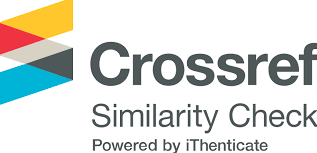In vitro propagation of Pinus caribaea Morelet from seeds of plus tree family
Keywords:
Pinus caribaea Morelet,, plus tree, in vitro propagation, cuttings,, , seedlingsAbstract
Pinus caribaea Morelet has potential for afforestation in Vietnam because
of its fast growing ability, good wood properties, adaptation to different site
conditions, and good resistance to wind and storm. However, the
propagation by seeds or cuttings has not met the needs of afforestation.
Therefore, in vitro propagation of P. caribaea from dominant seed plots
is an effective way to develop varieties with improved yield and quality
into production. In this study, we carried out an in vitro propagation for
P. caribaea using seeds obtained from selected plus trees. P. caribaea
seeds were germinated on cotton wool. The stem segments taken from the
40 - day-old seedlings were used in the sterilization process. The best
sterilization result was using 0.1% HgCl2 for 12 minutes. The optimal shoot
multiplication medium was MS* + 0.25mg/l BAP + 4.25g/l agar + 30g/l
sugar. The cycle of shoot multiplication was from 40 - 45 days, after that,
there was a decrease in the number of shoots and a restriction in height
growth in bud clusters. The most suitable medium for in vitro rooting was
1/2 MS* + 1mg/l IBA + 4.5g/l agar + 30g/l sugar. In vitro shoots began to
root after 4 weeks and completed rooting after 6 weeks.
References
1. Akaneme F. I. và Eneobong E. E., 2008. Tissue culture in Pinus caribaea Mor. var. Hondurensis barr. and golf. II: Effects of two auxins and two cytokinins on callus growth habits and subsequent organogenesis. African Journal of Biotechnology, 7 (6): 757 - 765.
2. Barnes R.D., Nikles D.G., Burley J., 1978. Progress and problems of genetic improvement of tropical forest trees. Department of Forestry commonwealth Forestry Institute university of Oxford, Brisbane, Quensland, Australia, 4 - 7 April.
3. Chengqun Lv. and Huang B., 2012. Stem Tissue Culture of Pinus elliottii × Pinus caribaea, in 2012 International Conference on Biomedical Engineering and Biotechnology, 1700 - 1703.
4. Hà Huy Thịnh, 2011. Chọn tạo giống và nhân giống cho một số loài cây trồng rừng chủ yếu. Nhà xuất bản Nông nghiệp.
5. Lê Đình Khả, 1999. Chọn giống các loài thông thuộc chi Pinus. Thông tin chuyên đề, Bộ Nông nghiệp và Phát triển nông thôn, Trung tâm Thông tin, số 7.
6. Murashige T. and Skoog F., 1962. A resied medium for rapid growth and bioassays with tobacco tissue cultures. Physiology Plant, (15): 473 - 495.
7. Phí Quang Điện, 1989. Báo cáo về khảo nghiệm loài và xuất xứ thông. Trung tâm Nghiên cứu Giống cây rừng, Viện Khoa học Lâm nghiệp Việt Nam.
8. Stahl P., 1988. Species and provenance trials on pine 1976 - 1984. Vinh Phu, Viet Nam








